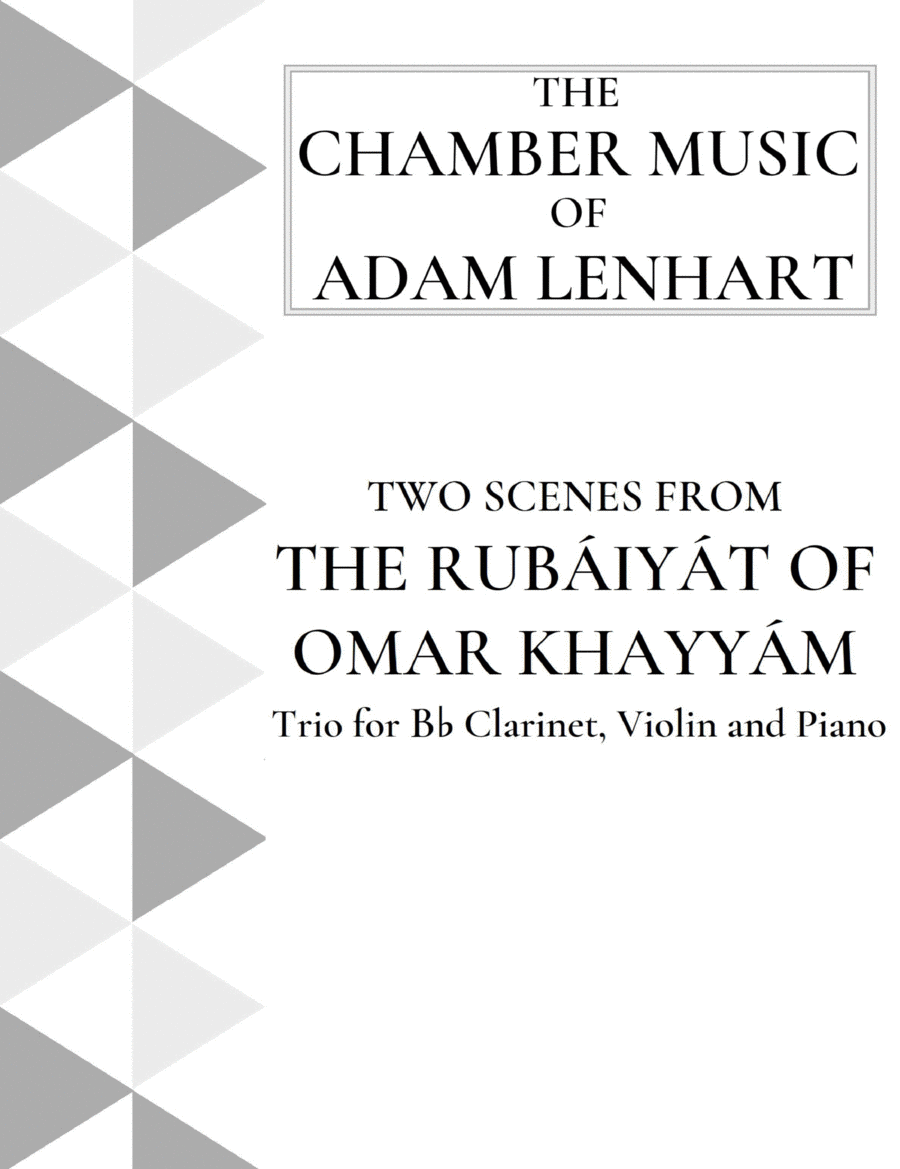B-Flat Clarinet,Piano,Violin - Level 5 - Digital Download SKU: A0.1208741 Composed by Adam Lenhart. Chamber,Classical,Contemporary,Contest,Festival. 33 pages. Adam Lenhart #806841. Published by Adam Lenhart (A0.1208741). Introduction to The Rubáiyát of Omar KhayyámThe Rubaiyat of Omar Khayyam is a Persian poetry collection first put together in 1460 in Shiraz.  It consists of quatrains, four-line poems, with a set of unconventional themes.  The poetry is irreligious and questions the afterlife and God's providence.  It shows keen awareness of the shortness of life and the finality of death. It advises therefore that every fleeting moment of every day should be savored, with wine, lovers and song. The combination of a serious philosophy of life and a carefree attitude has made the poetry popular for centuries.  In 1859, Edward FitzGerald brought out a loose English translation that took the world by storm.  It became the most beloved and widely known poem in the English language for decades until its popularity finally faded in the late twentieth century. Although they were attributed to the great mathematician and astronomer, Omar Khayyam (d. 1131), the poems were by many anonymous hands, and he was just a frame author, akin to Scheherezade in the Arabian Nights.- Dr. Juan Cole, Richard P. Mitchell Collegiate Professor of History at the University of MichiganAbout the CompositionTwo Scenes from The Rubáiyát of Omar Khayyám explores and embodies two of the main themes that carry throughout the quatrains of the poem collection. In FitzGerald's translation, the quatrains follow a day to night cycle. The two movements reflect this by starting off with an abrupt wake up section and ending the piece with a nocturne.  The first movement, Wine, celebrates the camaraderie, joy and chaos that comes through the physical joy of being with friends. The clarinet, violin and piano interact in a conversational way, talking, laughing, and insulting one another in their own independent lines.The second movement is entitled Intimacy and explores the emotional joy of connecting with one another. The movement is set in a waltz style dance and draws influence from Chopin, Liszt and other romantic era composers. This is juxtaposed by youthful and energetic phrases so that the piece embodies all forms of love: young love, years of marriage and even friendship. Each movement has a sense of urgency and density which is present in the rubá'iyát as well, expressing to the reader that our time on Earth is so short and to make the most of each day.---------------------------Adam Lenhart (b. 2002) is a University of Michigan student of music theory, composition, voice and organ from Ottawa Lake, Michigan. As a theorist, his areas of study vary widely, including 18th century counterpoint, the early American Sacred Harp tradition, and impressionism. As a composer, his music draws inspiration from nature, mathematics and poetry. In 2020 he was awarded the Michigan Music Education Association’s Young Composers of Michigan award, as well as first prize in the University of Toledo Young Composers competition. Lenhart has also participated in numerous ensembles across Michigan, including the MYAF All-State Choir, Tecumseh Pops Orchestra, University of Michigan Men’s Glee Club and the SMTD University Choir. He thoroughly enjoys collaboration with other composers, performers, poets and visual artists. Some of his recent projects include collaborations with individuals from the University of Michigan Chamber Music, History, and Poetry departments.
